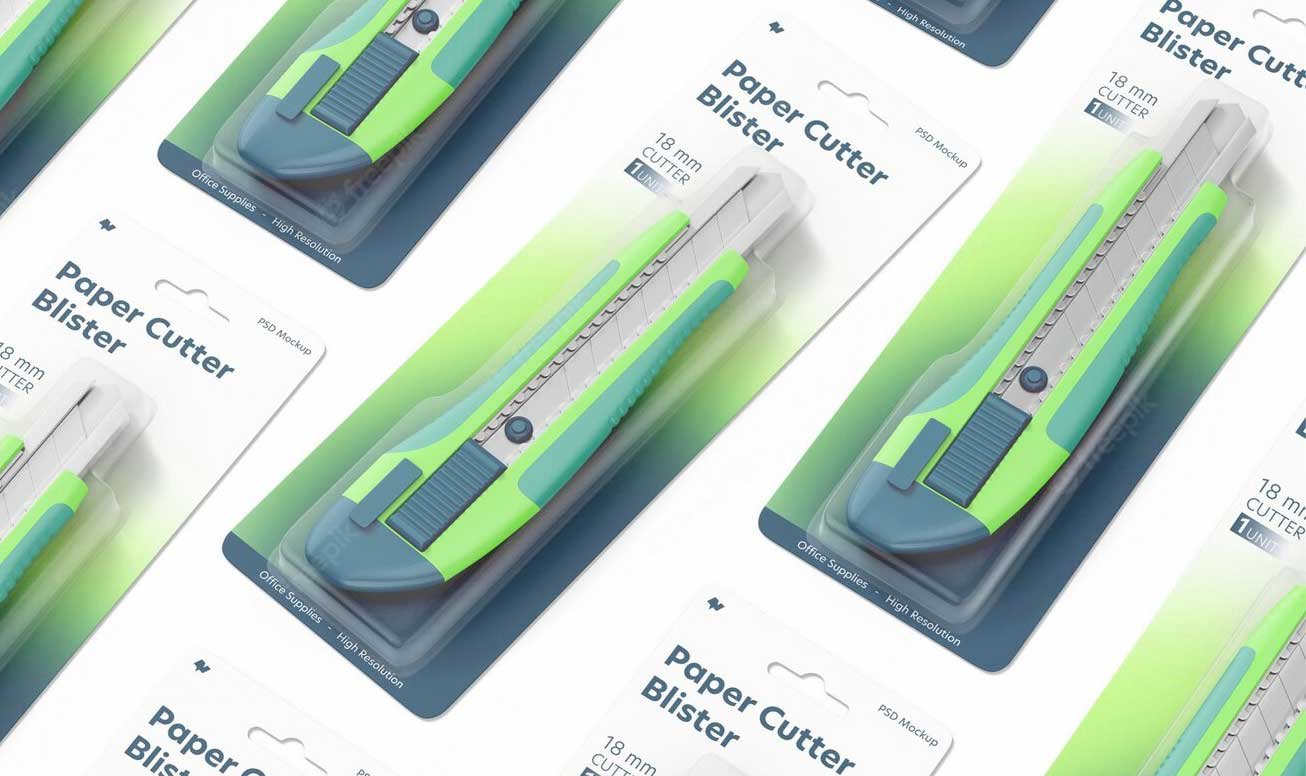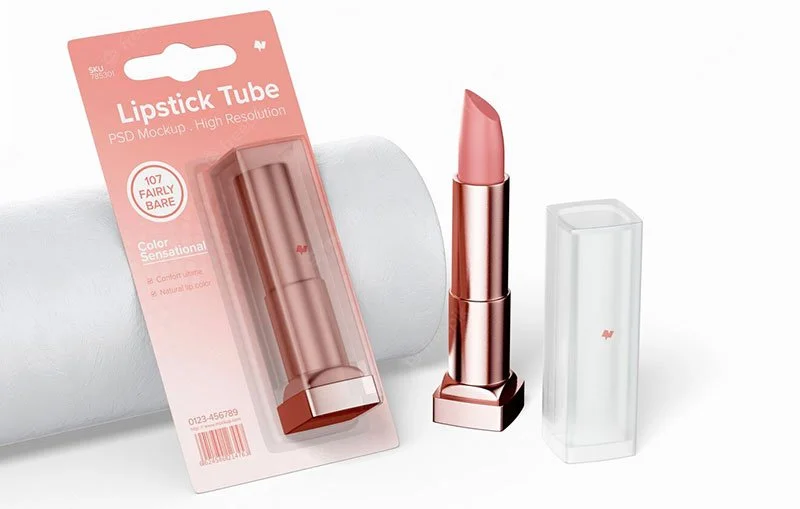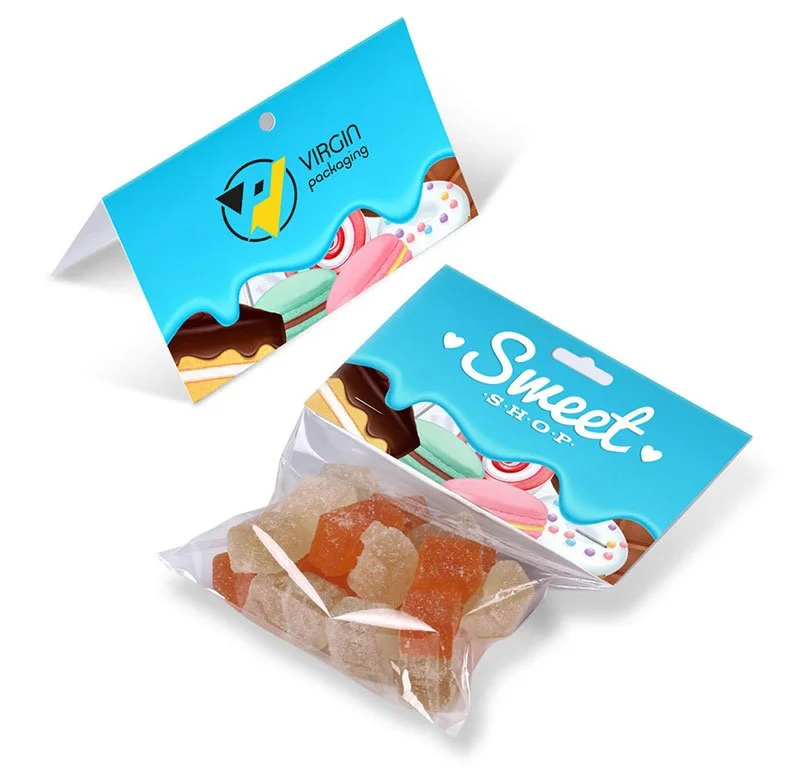How’s it Hanging – a Guide to Blister, Clamshell and Header Packaging
This guide looks at the different types of high visibility packaging such as simple header cards, blister packs and clamshells. This packaging would usually incorporate a hanging slot/eurohook hole so product can be effectively displaying in retail POS displays.
Blister Packs
Blister packs are an extremely effective and relatively inexpensive way to protect, display and promote small consumer items such as food items, pharmaceuticals, cosmetics, stationary, homeware and hardware. Some products typically packaged with blister packs include:
electronic goods and accessories (e.g. USB drives, cables, headphones)
toys
stationery (e.g. pens, drawing pins, paper clips, superglue)
batteries
toothbrushes and dental floss
DIY goods (e.g. screws, nails, nuts and bolts)
tablets and capsules
products with delicate parts
products that are vulnerable to breaking (e.g. printer ink cartridges)
As the name suggests, the packaging is formed from a sheet of plastic, shaped to form a bubble or ‘blister’ that completely covers the product. The blister can be a generic, uniform shape or something more unusual to protect a less consistently shaped product, potentially with delicate parts that need to be shielded. A blister pack can also accommodate multi-part product sets.
The beauty of a blister pack is that the products are very visible whilst being protected. Research shows that the consumer is more likely to purchase items where the packaging shows more of the product inside, compared to items of the same packaging which did not give them a glimpse of the actual product, in short ‘unseen is unsold’. The printed card graphical element of the pack is perfect for branding, eye-catching graphics, information and instructions.
They are also tamper-proof. In other words, if someone has tampered with a pack of tablets (e.g. removed some of the contents), you’d be able to see that clearly from a break in the packaging. They keep products clean and uncontaminated, which is why they are almost always used to package tablets. Other advantages of blister packaging include high stability, durability, theft protection and a wide range of marketing options.
Blister packaging comprises a cardboard blister card, the colour and blister coating layers, the contents (product) and usually a plastic cover.. A clear plastic blister pack is typically used in conjunction with a cardboard blister card. The blister packaging is attached to the blister card using a heat-seal or cold seal process that allows the product to be displayed in a wide variety of methods. The heat sealing process can be done with highly automated equipment where the printed card which has a heat-seal coating so the plastic blister can adhere to the card.
PVC and PET are commonly used to make double blister packaging. Although there is a wide range of plastics that can be used, these two are popular because they are sustainable, versatile, easy to form, inexpensive, and readily available. Other materials that can be used include PP, RPET, PET, PS, etc. These are however less common and costlier.
Advantages
Marketing & Branding – the printed card element is a great billboard to attract the customers attention with eye-catching graphics and promotional copy
Visual impact: a clear plastic display lets the product speak for itself.
Protection: Blister packs shield the product from damage, keep it clean and are also tamperproof as the packaging will be clearly damaged if opened.
Versatility- a wide variety of sealing options means a blister pack can suit a wide range of product shapes, sizes and values.
Lightweight: Blister, clam and header style packaging is very light, which lowers transport costs.
Easily recycled: Both the card and plastic elements of the packaging are simple to recycle.
What are the different types of Blister Pack?
Heat Sealed v’s Cold Sealed
With blister packs the plastic can be heat sealed to the plastic using a special heat seal coating which seals the blisters to the card under heat and pressure. This requires specialist equipment or contract packers to makeup. Alternatively, a cold seal process uses a dry adhesive or flanges to secure the blister and card in place. These are good for hand DIY assembly as very easy to pack
Face Seal
With a classic face seal blister pack the plastic blister is fixed to the front of the cardboard, to contain and protect the product. Face seal blister packages are manufactured with a cavity designed to fit a specific product dimensions. A small flange flows from the cavity and this flange is the portion that is sealed onto the blister card. Often a heat seal process is used to secure the flange to the card to provide a sealed compartment that displays and protects the product. Face-seal blisters are one of the least expensive clear packaging options available and are often used to package small, lightweight items in large volumes.
Full-face seal blister
A full face blister surrounds the product and the card backing. By fully covering the blister card, full face-seal blisters create a more durable package - minimizing potential damage to the blister card e.g. bent corners and reinforcing any hanger feature. The plastic is either heat-sealed to the card or slid through additional plastic pieces on each side.
Trapped blister
A trapped blister is almost the same as a traditional blister pack but consists of one hinged or two separate, sealed cards, with a die cut to trap the blister between the two sides when sealed. The card can be heat sealed or coated in a special dry adhesive which only sticks together when the card is folded.
Slide Blister Packaging
A Slide Blister is made to fit the shape of your product with a special lip which folds over the side of the card. The backing card slides onto the blister without needing special tooling. The main benefit of the blister tray that it can be assembled without the use of any sealing equipment. In fact, it is often secured with a staple or tape. The blister tray is especially useful for lightweight and flat items. With this option the blister backing card need to be stiff/thicker as the blister isn’t sealed to card.
Skin Board Packaging
Skin board packaging is a cost-effective alternative to clamshells and blister packaging. It uses a clear polyethylene plastic film to hold the product tightly against a rigid paper card. The decorative backer card is printed on skinboard - a specialty paperboard manufactured with microscopic pores that permit air to pass through the board during the packaging process. After printing, the surface of one side of the paperboard is coated with a heat-activated adhesive, which will bond the plastic to the skinboard in the skin packaging machine.
Clamshell packaging (Clam Packs)
Classic blister packs are ideally suited to light weight items, for heavier contents or multi-part products, a plastic clamshell is a good option. For example:
small tool sets
sets of lightbulbs
gift sets
cosmetic sets
Unlike a normal blister pack, clamshell packaging doesn’t have a cardboard back. Instead, it has a plastic back which is hinged to the front of the packaging, either at the side or the base to create a closed container. The product is placed into the clamshell with its clamshell insert card.
Some versions are made so they can stand upright on shop shelves, while others are given a hole to be hung from racks. They might have a button to snap them closed, or be heat-sealed shut. This versatile packaging is available in a wide assortment of configurations, the bubble can be evenly sized on the back and front or can be a different size and shape depending on the product inside it.
Header Cards
Header card packaging is a simple and low-cost method for presenting a product to the consumer. The header card, also referred to as a bag topper, secures the product inside a clear polyethylene plastic bags, also known as poly bags. The header card is folded over the open end of the bag, and the packaging is secured with staples or a cold seal adhesive if you don’t want the staples to show. Header cards can be specially shaped to help secure the item in a space or introduce a design element to the fold-over section of the card.
The header card displays product branding, information and offers a means of hanging the product for display. The clear plastic bag means the actual product is fully visible to the consumer. Header cards are printed on cardstock, which is thicker than average office printer paper. The cardstock may be easily folded, yet it provides ample support for light-weight products. Fold over Header Cards are good with for low cost utility or accessory items which simply fold over and staple to the poly bag.
Hanging Carton
A hanging carton has a lot of real estate to display product images and information and is a good eco-option where it isn’t as important to see the actual product.






